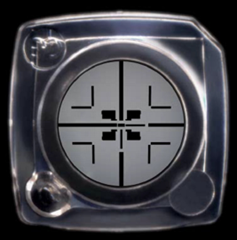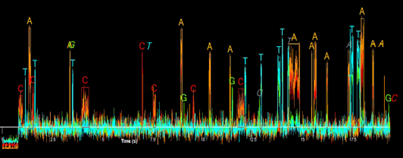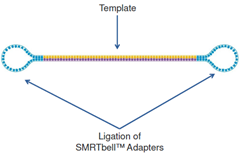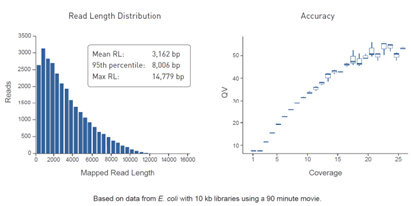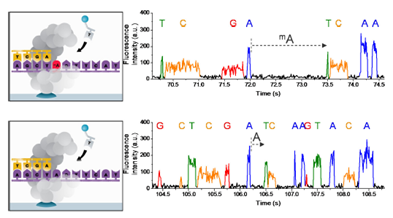手头有一套完整的PacBio技术资料,会慢慢的总结到博客上。
写在前面:PacBio公司主要有两个测序平台一个是RS,一个是最新的Sequel,下面如果没有指明则是在讲RS平台。
SMRT测序技术总览(SMRT® Sequencing Technology Overview)
首先必须对下面几个东西形成概念:
1.SMRT Cell:纳米制造的,不可回收的消耗品,每个 cell 里有 1M 的well(即ZMW),ZMW是单分子实时测序的最小场所。
Sequel SMRT Cell 1M are nano-fabricated纳米制造 consumables消耗品 patterned with附有图案 1,000,000 wells called zero-mode waveguides零模波导孔 (ZMWs). The structure of the ZMW is unique, as it enables real-time sequencing observation. They are packaged together in a streamlined流线型 4 SMRT Cell format (4/tray托盘). One SMRT Cell is utilized in each sequencing reaction, and experiments can be run on a single SMRT Cell or in batch批 mode, giving your projects a greater level of flexibility.
2.SMRT得到的初始信号是什么?(Signal Processing and Base Calling)
最初得到的是光学信号,需要将光学峰转化为碱基(Converting pulses of light into DNA bases and kinetic measures)
3.SMRTbell:样品准备时,会用到SMRTbell的Adapters
4.测序:在Adapters处加上DNA聚合酶和引物,复制就开始了
5.不同建库下的不同结果(Two Ways to Utilize PacBio® Long Readlengths)
一种是插入片段很长(>2kb,通常是为了denovo组装),这时由于读长限制只能测一个pass(两个Adapters之间就是一个pass)
一种是插入片段很短(<2kb,通常为转录组),这时就会测出多个pass,因而产生CCS,可以进行校正(错误率可降至1%以下)。
6.测序后reads的长度分布和校正准确度(Exponential Read Length Distribution and Consensus Accuracy)
7.C2 Chemistry的结果(Typical Results with C2 Chemistry)
8.实时动态信息(Kinetic Information)
SMRT技术可以实时的测出DNA链上的各种碱基类型(修饰和未修饰)(Epigenetics, DNA damage, new, novel modifications)
9.总结
SMRT单分子实时测序,会测出很长的reads,有多种方式来利用reads的长度(CLR和CCS)
没有扩增偏向,二代技术在GC含量异常区域会明显的测不准,而PacBio技术则没有任何偏向
能读出DNA链上的所有信息(表观),只要你能识别分离出信号的意义
